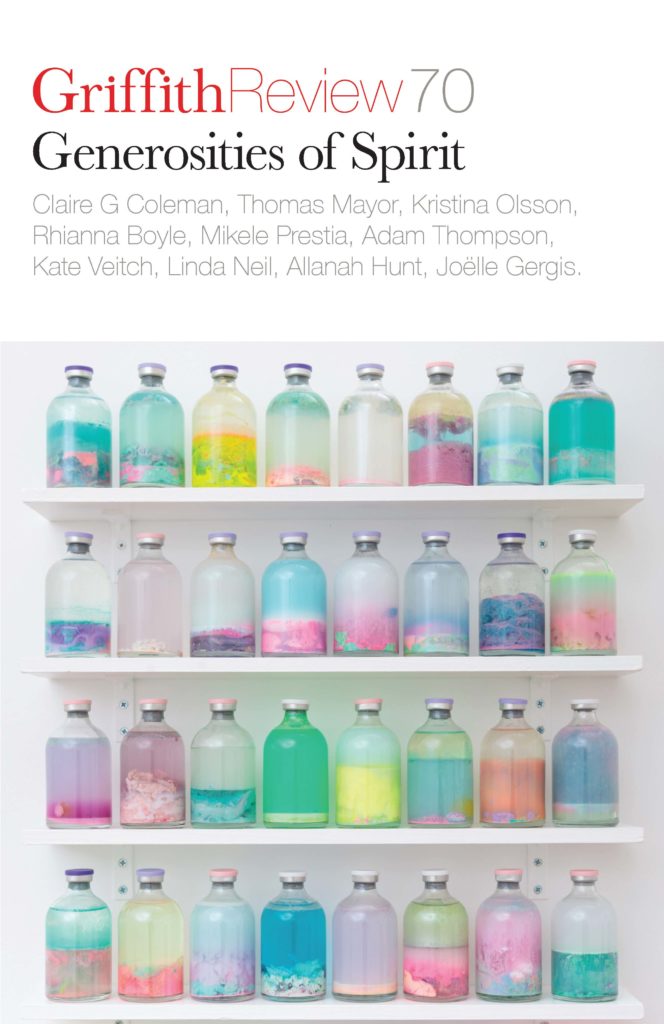Featured in

Buy
$27.99
- Published 20201103
- ISBN: 978-1-922212-53-5
- Extent: 264pp
- Paperback (234 x 153mm), eBook

Already a subscriber? Sign in here
If you are an educator or student wishing to access content for study purposes please contact us at griffithreview@griffith.edu.au
Share article
More from this edition

The gift
PoetryMy younger sister’s just now sent me a maxim that our mother used, mostly in regard to others; then, each day as eyesight failed her, more often of...

Blue and black
FictionMY MOTHER WAS a worrier. She speculated endlessly about whether her pie would be considered the best at bake sales or if the ladies...

Weekend in the capital
PoetryI’m 65 per cent more likely to be myself here in the capital of same-sex coupledom it’s true I like to button up but every move is...
Stay up to date with the latest, news, articles and special offers from Griffith Review.